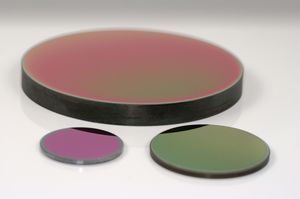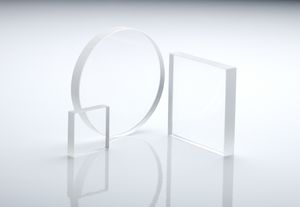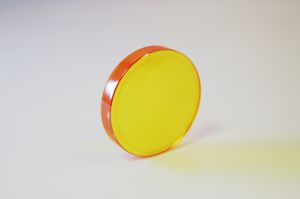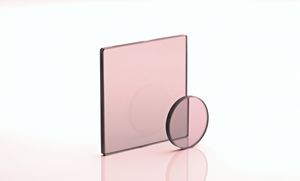
- Products
- Optical component
- Knight Optical (UK) Ltd
Magnesium fluoride (MgF2) optical component
Add to favorites
Compare this product
Characteristics
- Options
- magnesium fluoride (MgF2)
Description
Magnesium Fluoride (MgF2) is a colourless, hard and durable material and is birefringent. The materials durability and resistance to mechanical and thermal shock enable it to be used in harsh conditions, such as windows, while its birefringence makes it useful for polarizers in the UV waveband. Transmission occurs between 0.1µm and 7µm and the material transmits at over 90% between 0.4-5.0µm. Magnesium Fluoride has a hardness of about HK576, making it the hardest of the optical fluorides. It is stable in water, which means that it can be used for outer surfaces, such as windows.
Magnesium Fluoride makes excellent Rochon Polarizers with a waveband of, for example, 0.13 to 7µm. The separation angle, which is the angle between the ordinary and extraordinary rays, is about 10° at 1.55µm. The extinction ratio is about 10,000:1 with an output aperture of about 10mm (Crystal size dictates). Figure x shows the Rochon polarizers form and mode of operation.
Magnesium Fluoride is typically used to transmit in the VUV at 121nm. It can be used to transmit in the infrared but is largely inferior to Barium Fluoride and Calcium Fluoride in this respect.
Catalogs
No catalogs are available for this product.
See all of Knight Optical (UK) Ltd‘s catalogs*Prices are pre-tax. They exclude delivery charges and customs duties and do not include additional charges for installation or activation options. Prices are indicative only and may vary by country, with changes to the cost of raw materials and exchange rates.













